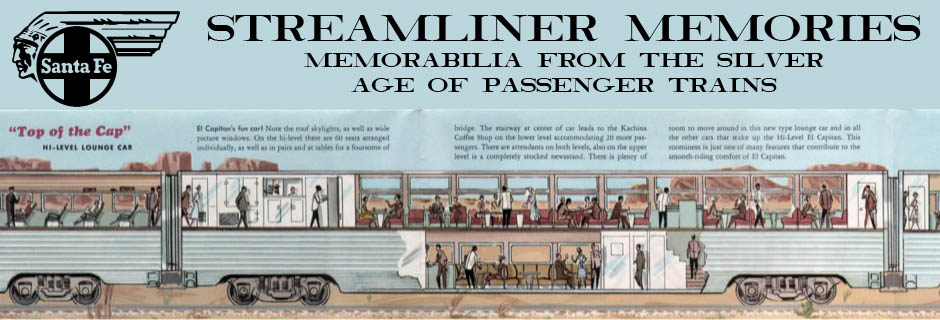The meal offerings in this menu are the most elaborate of any of the dinner menus we have seen from the Milwaukee Road. The only ones that have been comparable are a 1965 lunch menu and another lunch menu from the same year this one was issued.
 Click image to download a 1.8-MB PDF of this menu.
Click image to download a 1.8-MB PDF of this menu.
That year appears to be 1969, as both this menu and the lunch menu say, “Milwaukee Road Dining Car employees are proud of their special citation for sanitation by Surgeon General U. S. Public Health Service of nine consecutive years.” That citation was given to the railroad in March 1969. However, today’s menu interior has a small drawing of a turkey and the words “Seasons Greetings,” suggesting it is from sometime around Thanksgiving or Christmas of that year.
The menu offered four table d’hôte entrees, including sirloin steak ($5.25), walleye pike ($3.65), pork tenderloin ($3.55), and roast turkey ($2.85). These meals included soup, salad, potatoes, vegetable, and beverage, but dessert was 40¢ extra. Multiply prices by nine to get today’s dollars.
The a la carte side offered the sirloin steak alone for $3.85. The a la carte side also offered hamburger and five other sandwiches, all of which were accompanied by French fries, potato salad, or cole slaw, plus coffee, tea, or milk. The a la carte side also listed some soups and salads, and offered the same desserts listed on the table d’hôte side for 45¢ to 50¢ alone or 40¢ with a sandwich.
Menus from most railroads show a reduction in the number of entrêes and other offerings over time. The Milwaukee seemed to increase them. This may partly be because the replacement of the Tip Top Grill car with the Super Dome beverage lounge meant the dining car had to offer both elaborate first-class meals and sandwiches whose prices would appeal to coach travelers.

The menu indicates that this is for trains 2 and 3 (“3-2”), the Afternoon Hiawatha, which was Milwaukee’s flagship. Even late in its career Milwaukee did not slow its schedule appreciably, although by January 1970 the railroad could no longer justify two daytime trains each way between Chicago and the Twin Cities. The Afternoon Hiawathas had to go, presumably because the Morning Hiawathas made more stops.